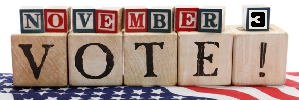Previous election experience
It is sometimes a question of whether to mention past failures or not, but I think it is useful in this context.
Win or lose, you gain experience and knowledge in the process.
Many people lose in their first election attempt(s), and they are better in subsequent tries.
Also, running for Congress probably shouldn't be the first race one tries. Earn your stripes with lower offices.
In Wisconsin, my home state from birth until leaving in 2021, I ran in four elections for two offices.
The Ballotpedia website documents my election attempts in Wisconsin for State Assembly in 2012, 2018 and 2020.
It does not cover my County Board of Supervisors election attempt in 2014.
My interest in politics extends back to my college days when I was living in Madison, Wisconsin. I would visit the State Capitol Building several times a week just to hang around
and enjoy the beautiful building and listen to the clamor. It was not until many years later, after I met my husband Alan, that I joined the Sierra Club and got more involved in politics.
Sierra Club's mission is to get people out in nature, to explore and enjoy it, and then want to protect it.
One of the ways of protection is to get politically involved. I was also involved with the Wisconsin League of Conservation Voters.
We frequently met with state legislators in the Capitol Building that I had fallen in love with decades earlier.
I even found myself flying to Washington, DC in March of 2007 to serve briefly as a volunteer for the Southern Utah Wilderness Alliance (SUWA)
to lobby on behalf of America's Red Rock Wilderness Act.
The Utah Wilderness Coalition, of which Sierra Club is a member, was the primary sponsor of the week of lobbying known as Wildweek.
There were about 50 people besides myself including the SUWA volunteer coordinator and several professional lobbyists in the employ of the Sierra Club.
Our main objective was to get 218 co-sponsors for the bill so that it could get to the hearing process and a possible vote in the House of Representatives.
Three days were spent going to appointments previously made with Congress and Senate offices, and mostly meeting with their legislative aids.
If I had one disappointment it was the lack of interest in actually co-sponsoring the bill on the part of many Representatives and Senators.
Everyone was in favor of preserving the Red Rock Wilderness, which is land already owned by the Bureau of Land Management,
but they did not want to co-sponsor although many offices indicated they would probably vote yes if it came up for a vote.
Despite our relentless efforts working for the environment, we were always fighting the same battles, year after year, regardless of who was in office.
The final straw for me was the turmoil in Wisconsin in 2011 after the Republican Tea Party won the trifecta allowing Governor Scott Walker and both state houses to tore our state apart.
I decided that I must run for political office, selecting State Assembly as my goal.
My husband and I were already close friends with a fellow Sierra Club member who had run for and been elected to State Assembly, and we knew of others.
Between environmental issues and everything else elected Republicans were doing I knew the time was right, and I had role models to follow.
I paid to attend the Camp Wellstone training program for candidates, and also trained and graduated from the Emerge Wisconsin program.
Emerge, a national program with divisions in most states, aims to help elect Democratic women. When I participated in the program this was a competitive program to enter,
with an application, reference letters, interviews and a fee. There were 25 students in my class.
I ran for Wisconsin State Assembly in 2012 but lost in the Democratic primary.
Encouraged by friends to run for County Board of Supervisors to gain name recognition, I ran in 2014, but lost to the incumbent.
Nobody challenged the Republican State Assembly incumbent in 2014. I watched as another Democrat ran and lost in the 2016 contest.
I tried again in 2018, and won the Democratic primary, but failed again in the November election.
Undaunted, I made a third effort in 2020, a year with additional Covid-19 challenges, and again failed in the November election.
Although I lost in four elections my results improved each time.
Most of Wisconsin's legislative district boundaries were gerrymandered to favor Republican candidates, and my district was severely handicapped.
There is no history, even now, that a Democrat has won in my old district. Furthermore, election statistics seem to have approximately the same
Win-Loss spread each year of approximately 60% of the votes going to the Republican and approximately 40% going to the Democrat.
This seemed to happen, regardless of the candidate and their campaign budget. After my 2020 loss I needed a break.
But I was aware that in votes cast within my district (ballots including my name) that I did well compared to other Democrats on the ballot.
And in comparison with other Democratic candidates I studied in neighboring districts, even if they won their contests, I also compared well.
I simply had the bad luck of living in a district gerrymandered to prevent my victory.
Wisconsin has nearly twice the population of Arkansas (5,961,000 vs 3,088,000). The population of State Assembly districts
in Wisconsin is about 60,000 residents, vs only about 30,000 residents in an Arkansas House district.
Arkansas' Congressional District 3 is drawn along nice county boarders and does not appear to be gerrymandered. I think we just have conservative voters here. This Congressional District
has a recent history of electing Republicans by a 2:1 ratio over Democrats. To be elected, as a Democrat, I need everyone to help convince one-third of the people who typically
vote Republican that this party has abandoned their values and needs, and to vote differently this election and elect me. I know that will be difficult for me, and very difficult
for those who will switch their party preference this election, but it is possible.
I cannot say this with certainty, but on May 20, 2025, Ben Wikler, chair of the Democratic Party of Wisconsin posted on his blog,
"The Democratic Party of Wisconsin is widely considered to be the strongest state party in the country."
I like to believe that my background came from a good place.
Election Statistics
Arranged Newest to Oldest:
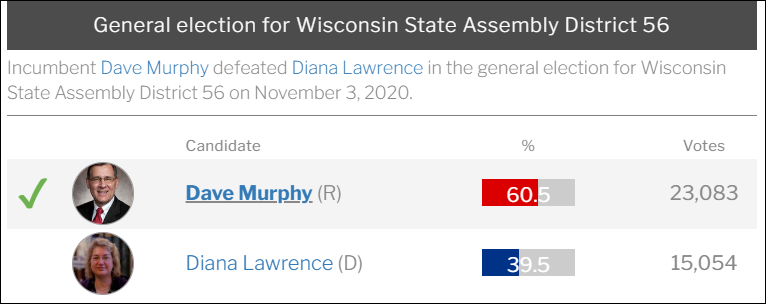
Election Statistics for November, 2020. Diana got 39.5% or 15,054 votes.
Only 10% of 99 districts, all approximately equal size, cast more total votes.
Only 7 Democrats with as many votes as I got lost their races.
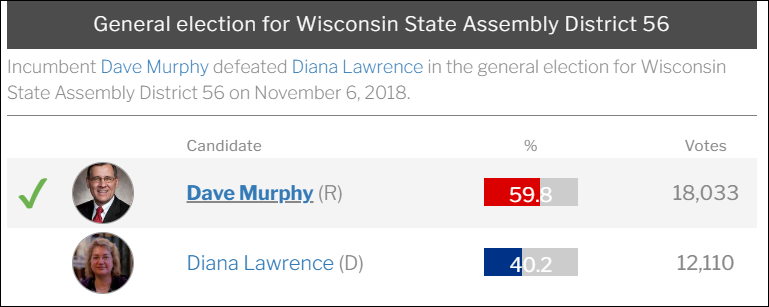
Election Statistics for November, 2018. Diana got 40.2% or 12,110 votes.
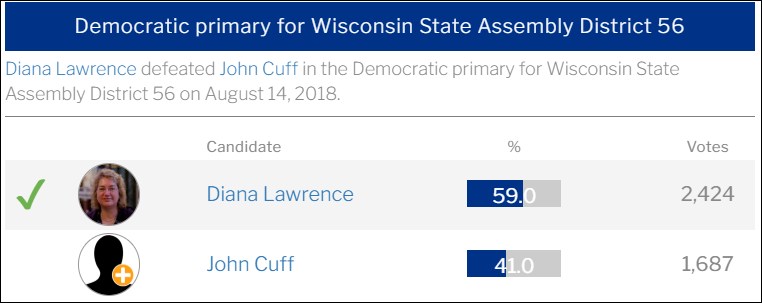
Election Statistics for August Primary, 2018. Diana got 59% or 2,424 votes.
(I won my second Primary, nicely. Larger number of voters.)
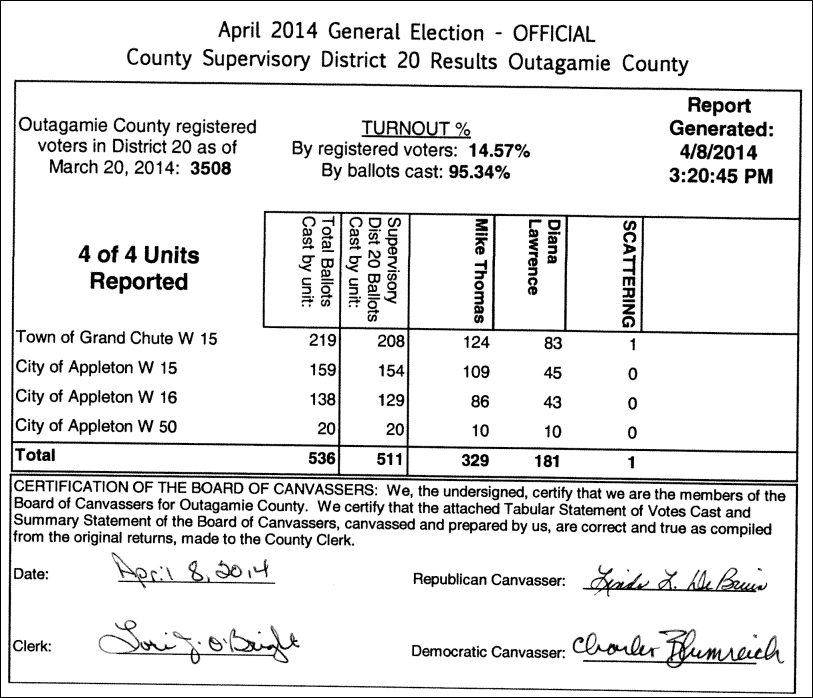
Election Statistics for April, 2014. Diana got 35.5% or 181 votes.
(Spring elections often have low numbers of voters)

Election Statistics for August Primary, 2012. Diana got 28.8% or 344 votes. (I lost my first Primary. Low number of voters.)
Photo Gallery
Arranged Newest to Oldest:
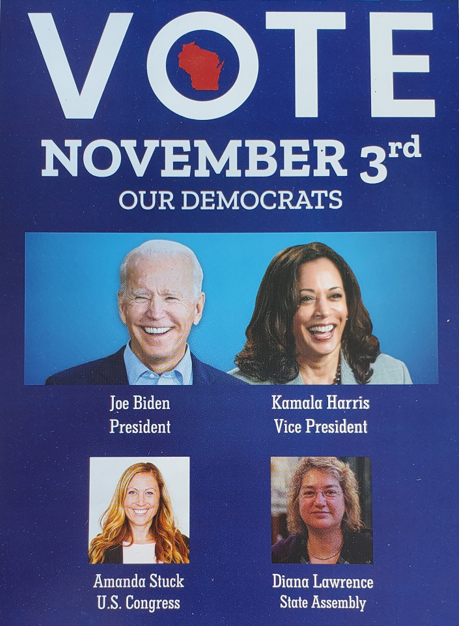

Door hanger produced by the Democratic Party of Wisconsin.
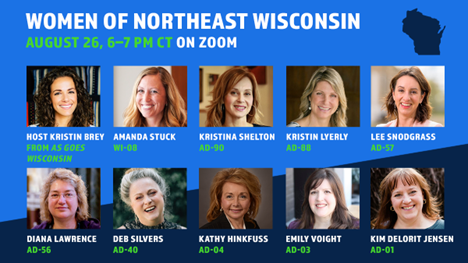
A Zoom event I participated in with other candidates in 2020.
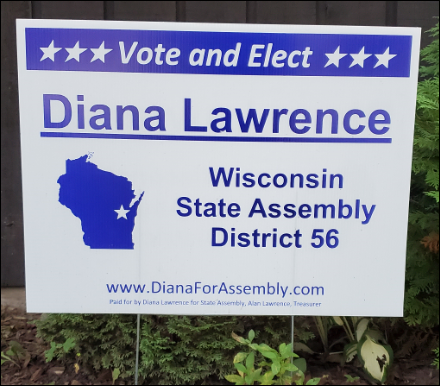
The yard sign I used in 2020.
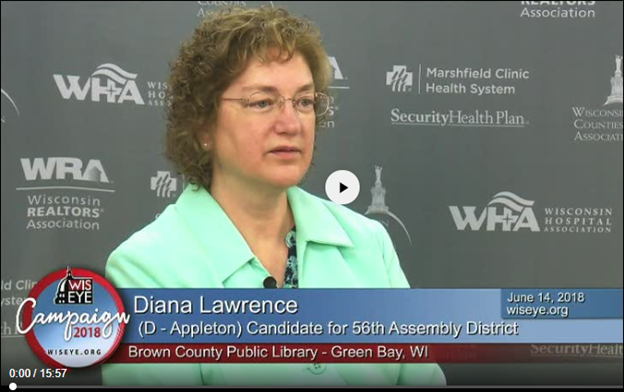
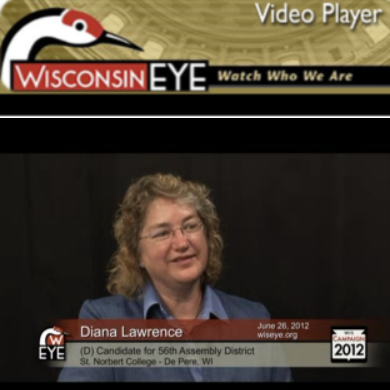
State-level candidates are interviewed by Wisconsin Eye and the video is posted to their website for the duration of the campaign.
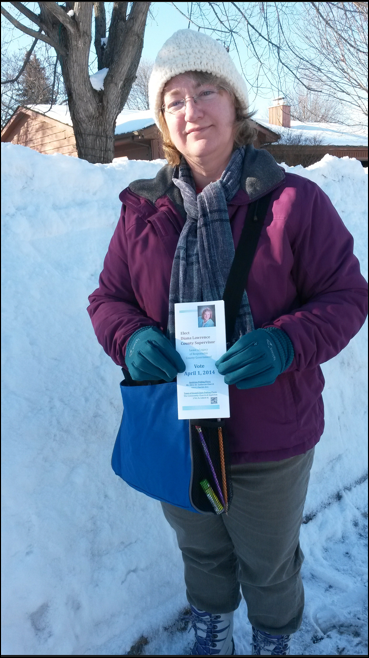
My campaign for County Board of Supervisors was in the winter. Lots of snow.
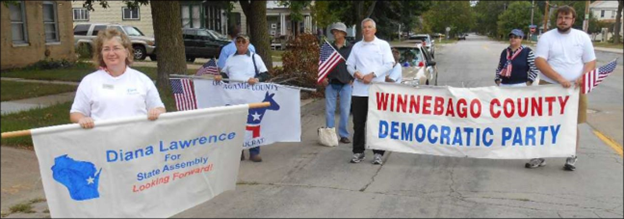
Labor Day Parade.

Summer Parade.
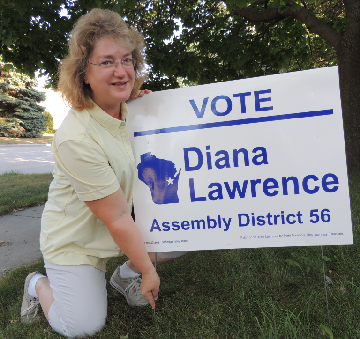
My first yard sign.
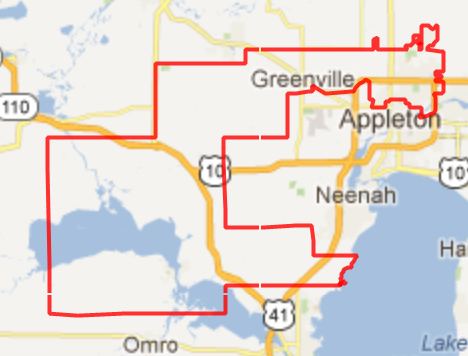
Map of the State Assembly District. It is Gerrymandered.
Photo Gallery of Activism
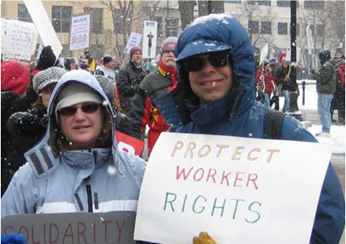
Protesting in Madison, WI in early 2012.
The newly elected Governor and trifecta legislature were inflicting great pain on the state.
This experience was the final motivation to run for public office.

People's Climate March in New York City on September 21, 2014. Possibly 400,000 people marched
in this New York City event and many thousands more participated in more than 2600 related events in maybe 166 countries.
Climate protection and environmental protection are very important to me, forcing me to sometimes be an activist. This march was important for generating momentum
leading to the Paris Climate Agreement.
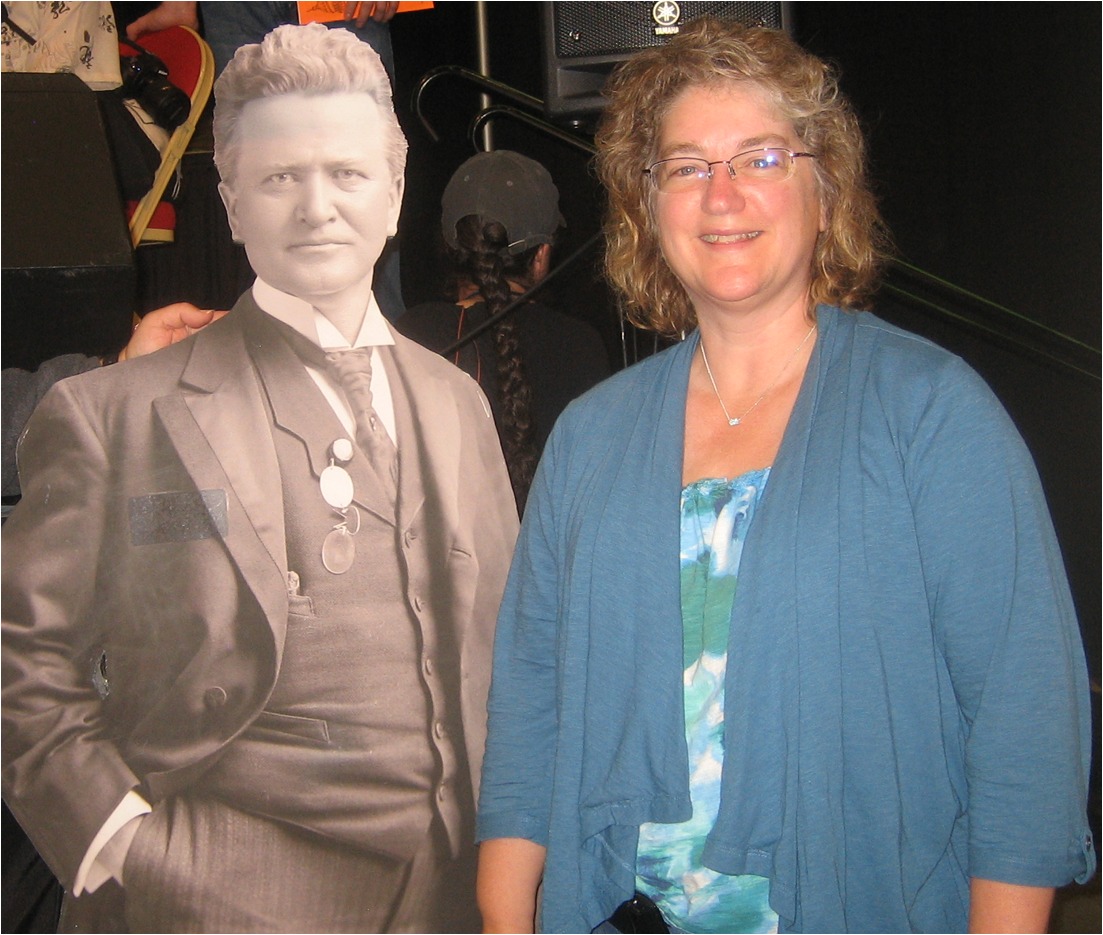
Robert M. La Follette, Sr. is a historical giant in Wisconsin. He was a Republican back when they were more like today's Democrats. (Party ideals
have flipped over the years.) He served as a Statesman in many ways, including as Congressman, Senator, Governor, and candidate for President.
He as been described as "The most celebrated figure in Wisconsin history."
He was always bucking the Republican Party, so he started his own. He founded the Progressive Party in 1924.
It was he and his Progressive Party of the Republicans that gave us fair labor laws. He was against corporations doing whatever they wanted.
La Follette was a dynamo for the people. He was also responsible for the bill that allows us to directly vote for our US Senators.
He earned the nickname of "Fighting Bob". I am standing next to a cardboard cutout of the man at a 2012 "Fighting Bob Fest",
an annual Chautauqua featuring progressive speakers. The event ran from 2002 to 2018.
While Robert La Follette, Sr. was "Fighting Bob", I would like to steal his moniker as "Fighting Diana". Fighting for the people.
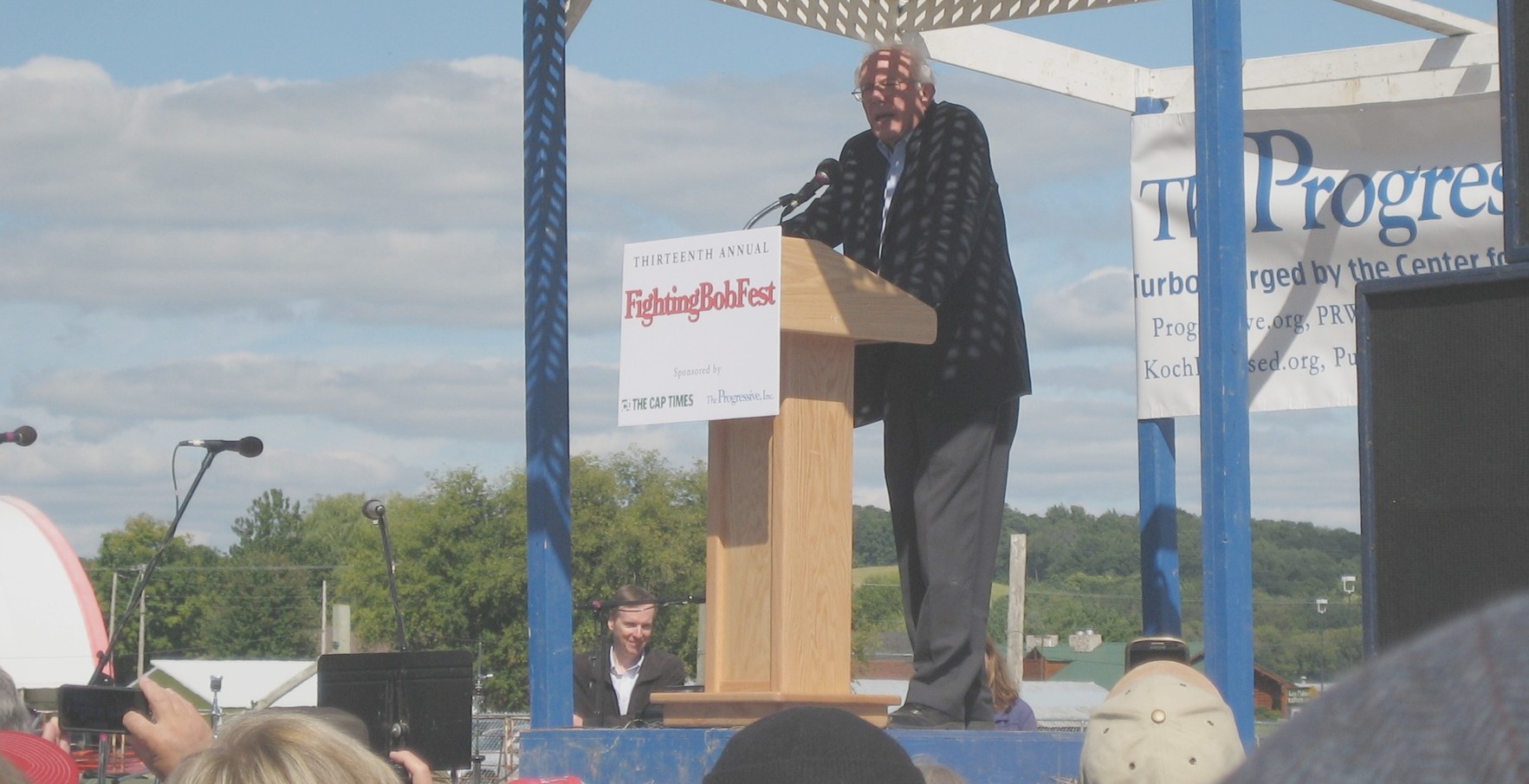
Senator Bernie Sanders was a frequent guest speaker at the Fighting Bob Festivals, inspiring me long before he attempted to run for President in 2016.
This image of Bernie was taken from my seat at the 2014 event.
| 
